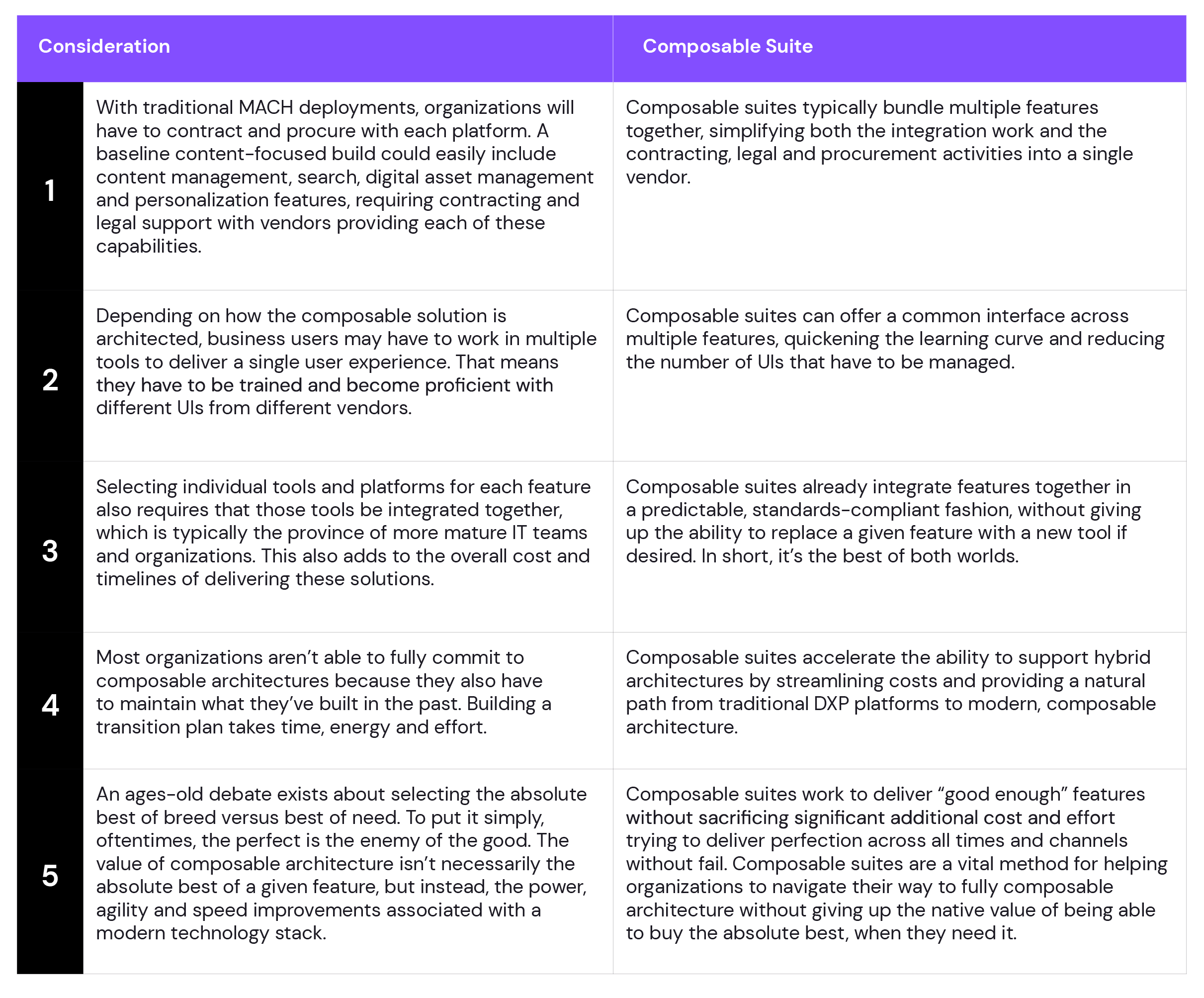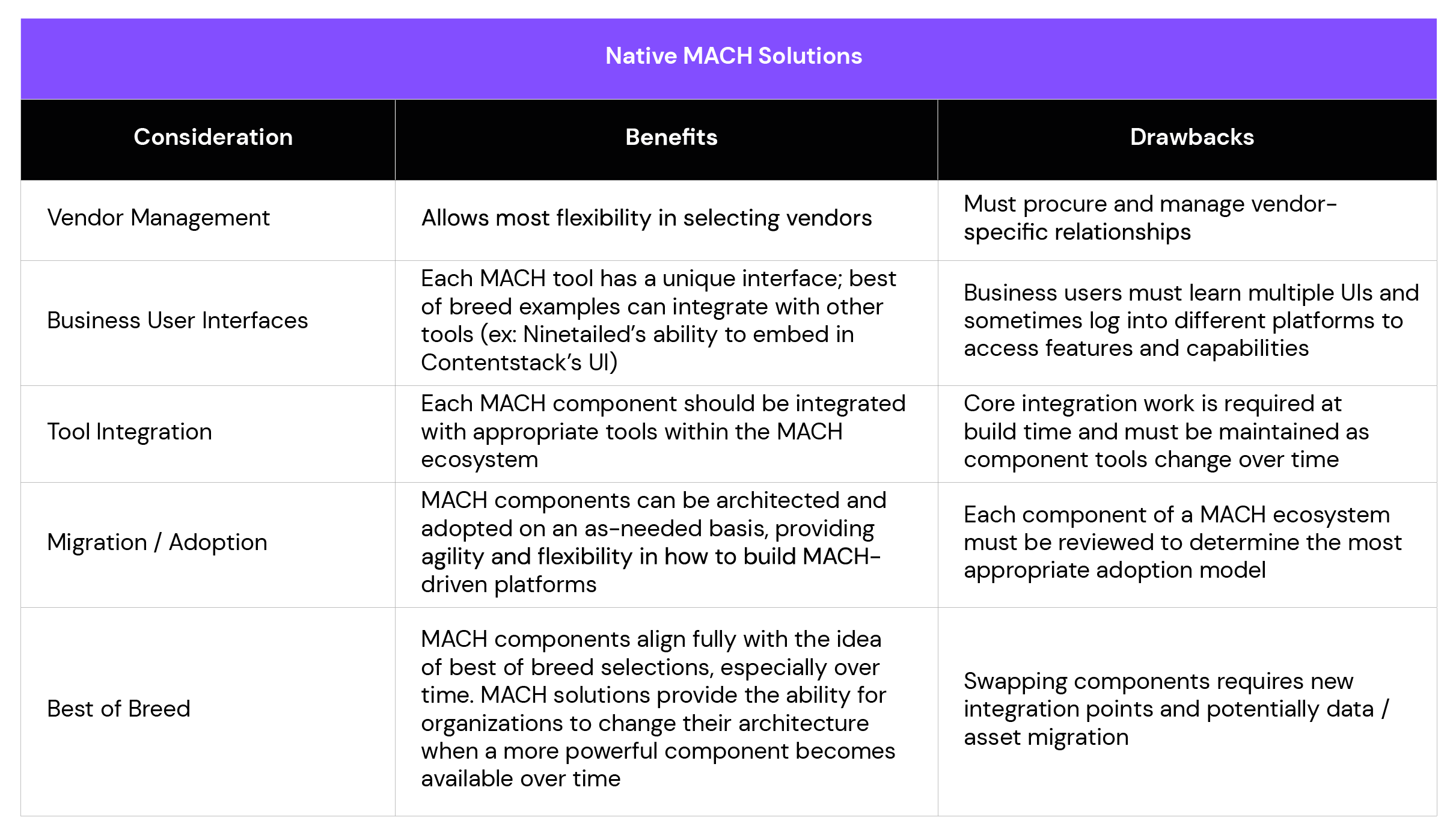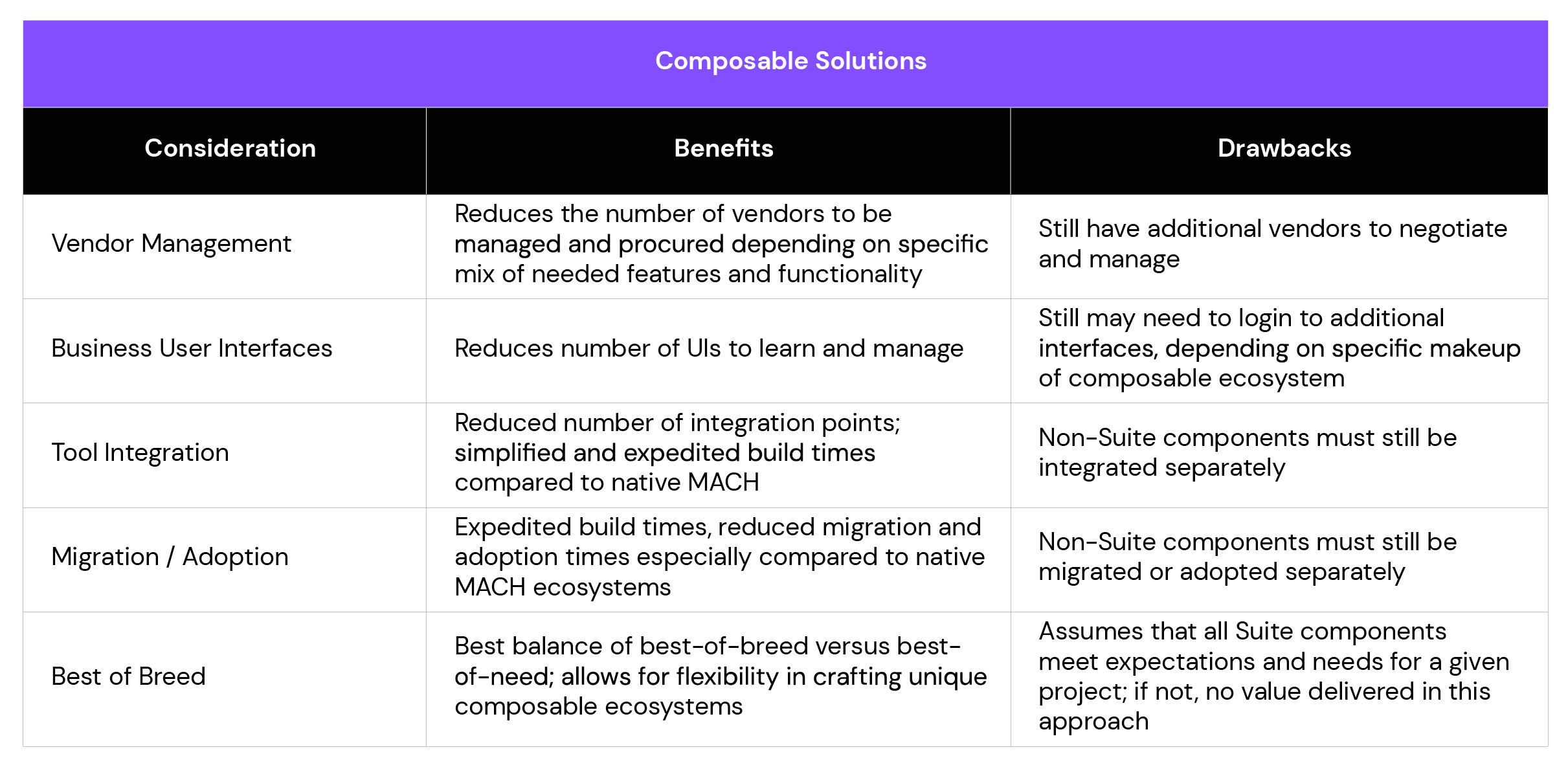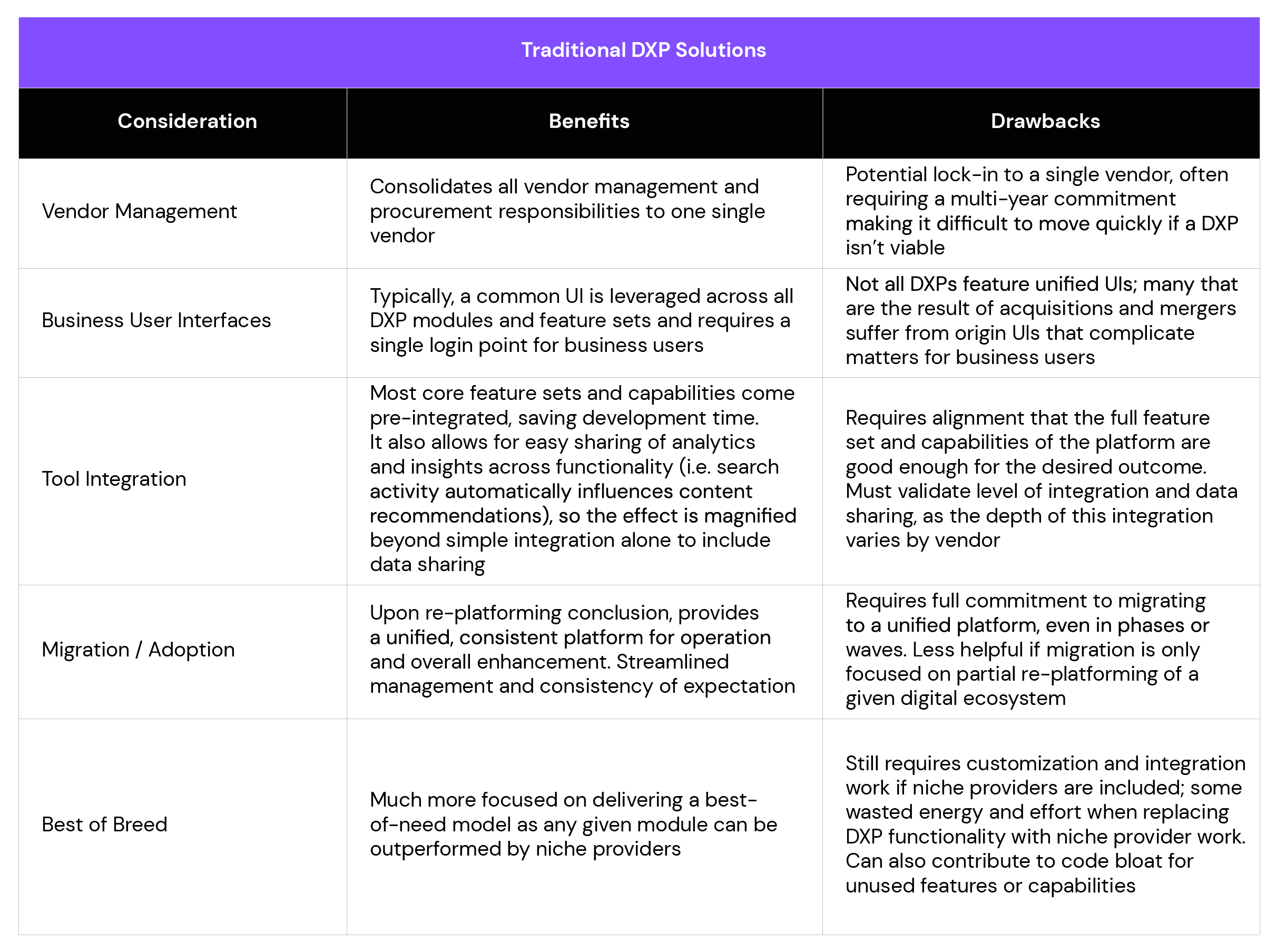5 things to consider before committing to composable architectures


Anyone who is paying attention to the world of content and commerce management has seen the meteoric rise of MACH (Microservices, API-first, Cloud-native, Headless), or composable architecture, and for good reason. MACH solutions are known for their dynamic, flexible approaches to experience development that delivers agility and performance that is the goal of any business who leverages digital channels to interact with, convert and retain customers. In addition, the philosophy of MACH is hard to argue: choose best of breed solutions, have no vendor lock-in, create your assets once and use them anywhere.
To truly realize the benefits of composable solutions requires maturity and a plan for building and growing into these architectures. Many organizations don’t have the ability to simply commit to composable and convert legacy systems to more modernized approaches and instead, must consider new, hybrid methods to slowly migrate to composable architectures, leveraging composable suites instead of jumping wholeheartedly into complete rewrites.


A final concern should be considered by organizations seeking their path to embracing composable technologies: the MACH marketplace is fast evolving and typically will see market consolidation through acquisitions and mergers. Implementing individual tools today that could later be acquired may have ramifications across how companies build, maintain and evolve their composable ecosystems. While this is always a concern in the world of IT, it is more likely to be prevalent in this space given the rapid growth and explosion of interest in MACH tools.
Companies today have three strong options to select as they think about how to continually deliver persuasive customer experiences, two of which are built upon the concept of composable architectures:



Five considerations before committing to Composable Architectures
Download the PDF